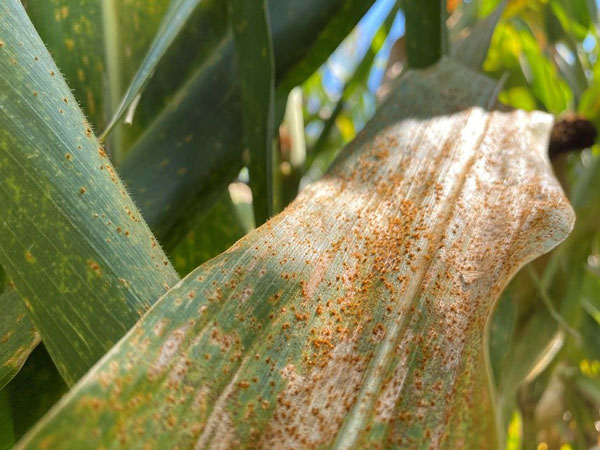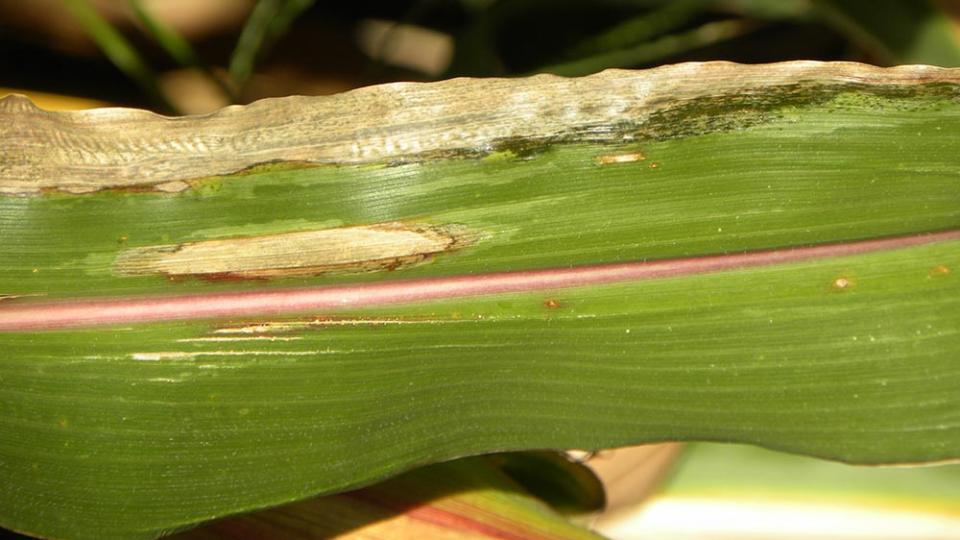

USDA is an equal opportunity provider and employer. Infected leaves senesce or dry out and die more rapidly, young tillers can also be destroyed. To file a complaint of discrimination write to USDA, Director, Office of Civil Rights, 1400 Independence Avenue, S.W., Washington, D.C. Sheath blight is a fungal disease caused by Rhizoctonia solani. (Not all prohibited bases apply to all programs.) Persons with disabilities who require alternative means for communication of program information (Braille, large print, audiotape, etc.) should contact USDA's TARGET Center at (202) 720-2600 (voice and TDD). Department of Agriculture (USDA) prohibits discrimination in all its programs and activities on the basis of race, color, national origin, age, disability, and where applicable, sex, marital status, familial status, parental status, religion, sexual orientation, genetic information, political beliefs, reprisal, or because all or a part of an individual's income is derived from any public assistance program. Individuals using such products assume responsibility for their use in accordance with current directions of the manufacturer. Reference to products in this publication is not intended to be an endorsement to the exclusion of others that may be similar. This information in this publication is only a guide, and the authors assume no liability for practices implemented based on this information. Always read and follow directions on the label.This publication was developed by the Crop Protection Network, a multi-state and international collaboration of university/provincial extension specialists and public/ private professionals that provides unbiased, research-based information to farmers and agricultural personnel. At the turn of the 20th century, northern corn leaf blight (NCLB) was a common problem for corn growers in New England. Preventative fungicides can also be used to control fungal diseases in the home garden. Mulching tomato plantings this way may also reduce weeds and prevent loss of soil moisture during the growing season. The soil beneath and surrounding the tomato plant should be covered with at least 6 inches of mulch early in the tomato season.

The use of a soaker hose to irrigate completely eliminates regular wetting of the leaves.Ĭover crop mulches such as composted leaves or straw mulch can be placed on the soil surface to help reduce soil-borne fungal diseases such as Buckeye rot and Anthracnose fruit rot by keeping developing fruit from coming into direct contact with the soil surface. Watering should be performed in the morning to allow sufficient drying time. Staking or caging tomatoes brings the plants up off the soil and allows more rapid drying of the plant.
#CROP BLIGHT DEFINITION FULL#
Tomatoes should be grown in full sun with good air circulation to dry the leaves. Fungi thrive in moist, humid conditions, in particularly on leaves that remain wet for long periods of time. A minimum rotation of three years is considered essential to help reduce populations of soil-borne fungi.Ī second line of defense against leaf spot diseases is to alter the microclimate surrounding tomato plants. These vegetables all have similar disease problems. Each year plant tomatoes in a new location away from areas where tomatoes, eggplant, potatoes or peppers have grown in the past. Thoroughly burying the residue will keep the spores below the soil surface and away from tomatoes.Ĭrop rotation is another means to help reduce disease in tomato plantings. At the end of the growing season all tomato refuse should be removed and discarded, composted (if the pile is hot enough to kill the spores) or tilled into the soil. Proper sanitation measures can keep spores from infecting the next crop. During the next growing season overwintering fungal spores are splashed from infested tomato or weed debris in the soil on to newly planted tomatoes restarting the disease cycle. Fungal spores can overwinter in infected plant debris and on weeds related to tomato, such as horse nettle, ground cherry, and night shade.

The first cultural practice is to remove old plant debris. There are a number of cultural practices that can be used to help reduce tomato disease in the home garden. By the time Interstellar occurs, the last crops of okra are dying. Control Measures for Fungal Diseases in the Home Garden The Blight is a plague that has ravaged almost all the remaining food sources on Earth. Over time, infected fruit will become soft and mushy. In moist conditions, white fluffy fungal growth will develop on infected fruit. On green fruit, buckeye rot will produce distinct brownish-black lesions that have a definite concentric or target-like appearance. Buckeye rot of tomato with distinct concentric rings on mature green infected fruit.īuckeye rot typically affects immature and mature green fruit that lay on the soil surface.


 0 kommentar(er)
0 kommentar(er)
